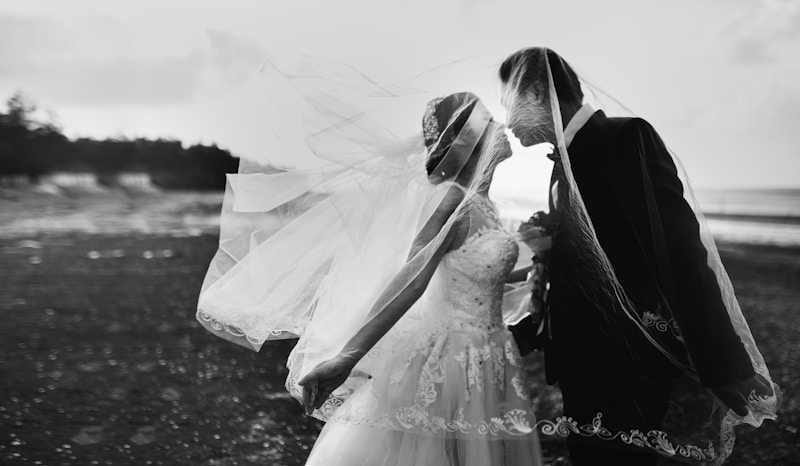Understanding Consumer Price Sensitivity for Wedding Dresses
Understanding Consumer Price Sensitivity for Wedding Dresses
Introduction to Consumer Price Sensitivity in the Wedding Dress Market
The wedding dress industry is a unique sector within the retail market. When it comes to making one of the most important purchases in a bride's life, understanding the factors that influence pricing, preferences, and decision-making is crucial. At the heart of these decisions lies the concept of consumer price sensitivity for wedding dresses. In this article, we’ll explore the various elements that drive consumer behavior regarding prices in the wedding dress market, discuss the implications for retailers, and provide insights that both consumers and businesses can benefit from.
Defining Consumer Price Sensitivity
Consumer price sensitivity refers to how the demand for a product changes with alterations in its price. Essentially, it reflects how much consumers are willing to pay for wedding dresses and how their purchasing behavior shifts in response to price changes. This sensitivity can be influenced by various factors, including:
- Budget Constraints: Most brides have a set budget for their wedding, and this can significantly affect their choices.
- Brand Loyalty: Some consumers may be willing to pay a premium for a specific brand they trust.
- Quality Expectations: The perceived quality of wedding dresses often justifies higher prices.
- Trends and Styles: Seasonal trends and popular styles can drive price sensitivity.
The Impact of Pricing on Consumer Choices
When brides-to-be shop for wedding dresses, they typically consider multiple brands and styles. Pricing plays a crucial role in this decision-making process. Below is a table highlighting how different price ranges commonly affect purchasing behavior in wedding dress shopping:
| Price Range | Consumer Behavior |
| Under $500 | Usually attracts budget-conscious buyers seeking value. |
| $500-$1,500 | Common mid-range choice, where consumers expect quality but are price-sensitive. |
| $1,500-$3,000 | Luxury segment, appealing to brides looking for exclusivity and designer labels. |
| Over $3,000 | High-end market, reserved for affluent consumers or those desiring bespoke gowns. |
Factors Influencing Price Sensitivity in Wedding Dresses
1. Economic Conditions
The state of the economy can subtly or significantly influence consumer spending habits. For instance, during a recession, consumers may become more price-sensitive, leading them to seek off-the-rack dresses or discounts. Conversely, in a flourishing economy, brides may feel more empowered to indulge in higher-priced options, believing they are investing in a long-lasting product.
2. Social Trends and Influencers
The rise of social media and wedding influencers has transformed how brides approach wedding dress shopping. Many modern brides are influenced by trends showcased online, swaying their perceptions of what constitutes a fair price versus an extravagant one.  often dictate price ranges and consumer expectations.
often dictate price ranges and consumer expectations.
3. Cultural Influences
Cultural factors can also impact price sensitivity. For instance, in cultures where weddings are a grand affair, consumers may allocate more of their budget to wedding dresses and other attire. In contrast, cultures with minimalistic wedding traditions may prioritize affordability, thus exhibiting higher price sensitivity.
Strategies for Retailers to Address Price Sensitivity
Understanding the nuances of consumer price sensitivity enables retailers to devise effective marketing strategies that resonate with their target audience. Here are a few suggestions:
- Implement Tiered Pricing: Offering multiple price points can cater to a broader range of brides, from budget-friendly options to luxury dresses.
- Provide Customization Options: Allowing brides to add embellishments or select fabrics based on their budget can create a personalized experience while accommodating various price sensitivities.
- Highlight Value and Quality: Educating consumers on the craftsmanship and quality of the dresses can shift focus from price to value.
- Seasonal Discounts: Offering promotions during off-peak seasons can attract price-sensitive consumers.
Consumer Insights: What Brides Look For
Brides are not merely shopping for a dress; they are investing in a memory. Research shows that emotional factors can outweigh price in some cases. Here’s what brides commonly look for when shopping for wedding dresses:
- Style Preferences: Many brides have a clear vision of what they want, often gravitating toward specific silhouettes, colors, and designs.
- Size Availability: Ensuring a wide range of sizes can help retailers serve a diverse clientele while reaching more price-sensitive consumers.
- Customer Service: Exceptional customer experiences can justify higher prices, creating loyalty among consumers.
- Return Policies: Flexible return and exchange policies can encourage purchases, particularly among price-sensitive consumers.
The Role of Reviews and Recommendations
With the increased reliance on online resources, reviews and recommendations play a pivotal role in shaping consumer opinions on price and quality. Here’s how:
- Peer Reviews: Positive testimonials can boost a brand's reputation, increasing the likelihood of purchase despite higher price tags.
- Influencer Partnerships: Collaborations with popular wedding influencers can enhance brand visibility, drawing the attention of price-sensitive consumers towards premium options.
Conclusion: Key Takeaways
Understanding consumer price sensitivity for wedding dresses is essential for both brides and retailers. Brides should assess their budgets while considering all aspects of a purchase — including quality, style, and emotional value. Retailers, on the other hand, must recognize the varying degrees of price sensitivity among their consumers and strategize accordingly to attract a diverse clientele while maintaining profitability.
As this market continues to evolve with shifting economic climates and changing social dynamics, staying informed about consumer behavior will be vital in making well-rounded decisions, whether you’re a bride-to-be or a wedding dress retailer. In conclusion, always consider your personal values, budget constraints, and choices in order to make the best possible decision regarding one of life's most memorable purchases.
Lastly, be prepared for the aspects of pricing to further evolve, as new trends in the wedding landscape emerge over time.
